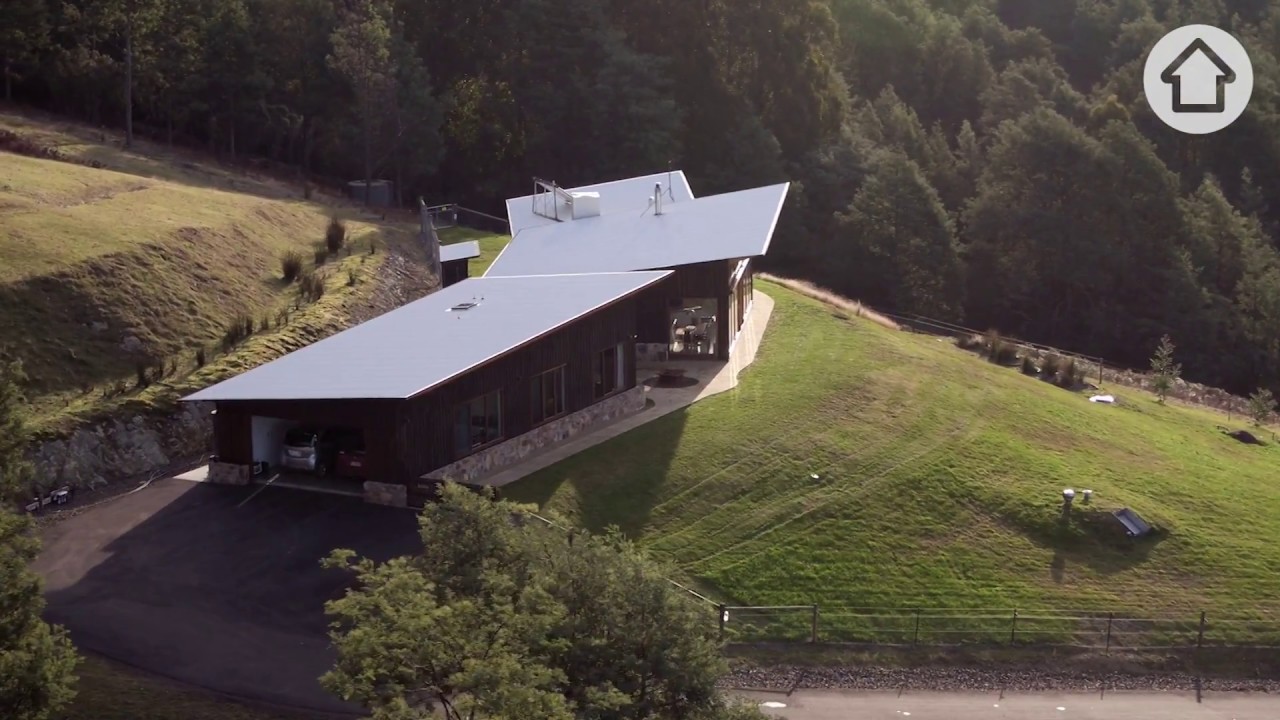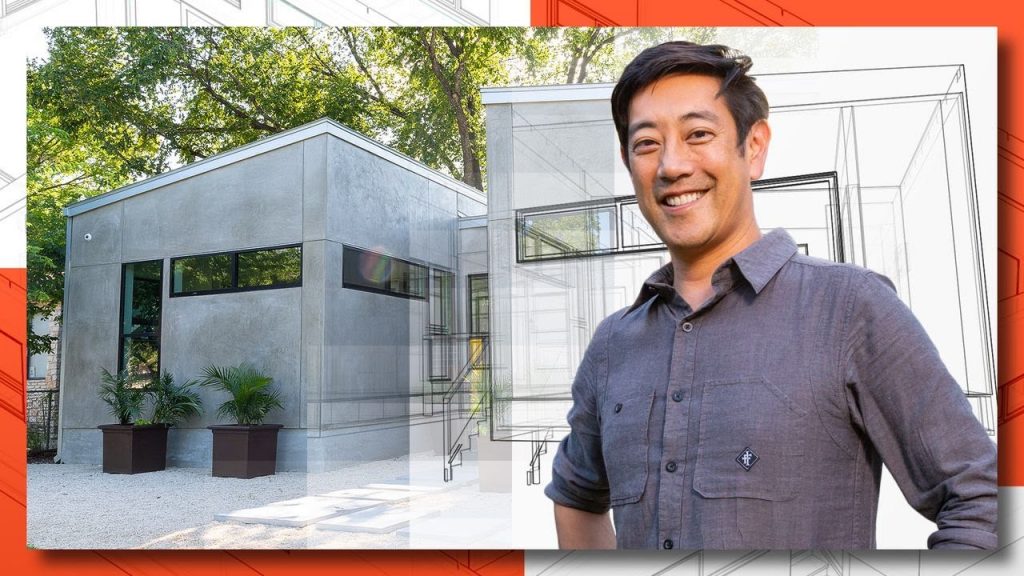Future Homes: Self sufficient living in off-the-grid Tasmanian home

Sustainable homes and off-the-grid living is on the rise, and with rising energy costs it’s easy to see why people are unplugging from mains power, disconnecting town water and becoming self-sufficient.
Put simply, off-the-grid living refers to homes that are sustained autonomously without a reliance on municipal resources — such as electricity, water and gas.
In this episode of Future Homes, Tasmanian couple Peter and Robyn show us their exceptional off-grid dream home situated on 80ha of pristine Tasmanian forest.
After living in the suburbs of Sydney, the couple purchased the stunning block of land in Tasmania to build their dream home for retirement. After discovering that the the land was not connected to the grid, they decided to build a self-sufficient home.
Their home does not rely on power for heating or cooling, with the sun providing enough natural light for the house to always remain warm. Where power is required, the home is solar powered with a hydro-generator in the creek in the forest nearby.
The home is built using natural materials from around the property, for example granite-like rock and pine wood. They see the property as a chance to conserve Tasmania’s beautiful forest and wildlife.
The couple also built a fire bunker into the hill by their home, so that they can defend the house in the case of a bushfire. This due to the personal value that self-contained living has given to their home.
They take great pride in the dream home that they have created and consider their home to be an example of how others can lead their lives sustainably. Robyn and Peter hope that sustainable living is the way of the future.
How does the design and construction of the Tasmanian Light House demonstrate the potential for sustainable and affordable housing options?
The concept of self-sufficient living has become increasingly popular in recent years, with many homeowners and builders seeking to reduce their reliance on traditional energy sources and decrease their carbon footprint. In Tasmania, a small island state off the coast of Australia, one couple has taken this idea to the extreme by designing and building a completely off-the-grid home that is entirely self-sufficient.
The property, known as the Tasmanian Light House, is located in a remote area of Tasmania and is powered entirely by renewable energy sources. The building itself features a unique design, with walls and floors constructed from a combination of straw bales and sustainable timber. The roof is made of recycled materials and is designed to collect rainwater, which is then filtered and used as drinking water.
Inside the home, the owners have incorporated a range of energy-efficient appliances and technologies to reduce their reliance on the grid. The property includes a large solar array, which provides all the necessary electricity for the entire home. This is backed up by a battery system that stores excess power for times when the sun isn’t shining. The home also includes a state-of-the-art composting toilet, which eliminates the need for a traditional septic system, and a small vegetable garden provides fresh produce for the owners.
While living off the grid might seem like a daunting prospect, the owners of the Tasmanian Light House stress that it is entirely manageable with a bit of planning and dedication. In fact, they believe that their lifestyle has actually helped them to lead a more fulfilling and meaningful existence.
In addition to the environmental benefits of self-sufficient living, the Tasmanian Light House also demonstrates the potential for sustainable and affordable housing. With rising energy and house prices, there is an increasing need for innovative solutions that provide affordable, low-cost housing options. Homes like the Tasmanian Light House prove that it is possible to build homes that are not only environmentally friendly but also cost-effective.
As we look towards the future, self-sufficient living is likely to become an even more important consideration for homeowners and builders. With increasing pressure to reduce our carbon footprint and protect the environment, homes like the Tasmanian Light House provide a valuable blueprint for sustainable and efficient living. Whether living off the grid in Tasmania or adopting more sustainable practices closer to home, there is no doubt that self-sufficient living is a trend that is set to continue as we strive to build a more sustainable future.










She Left California To Live In A Texas Tiny House Village – Fulfilling Her Childhood Dream
Building The Most Secret Underground House And Water Slide To Swimming Pool Underground
Underground dome house of the family who led geese to fly home
Navy SEAL Jocko Willink Breaks Down Combat Scenes From Movies
Inside the Strange, Psychic World of Indigo Children